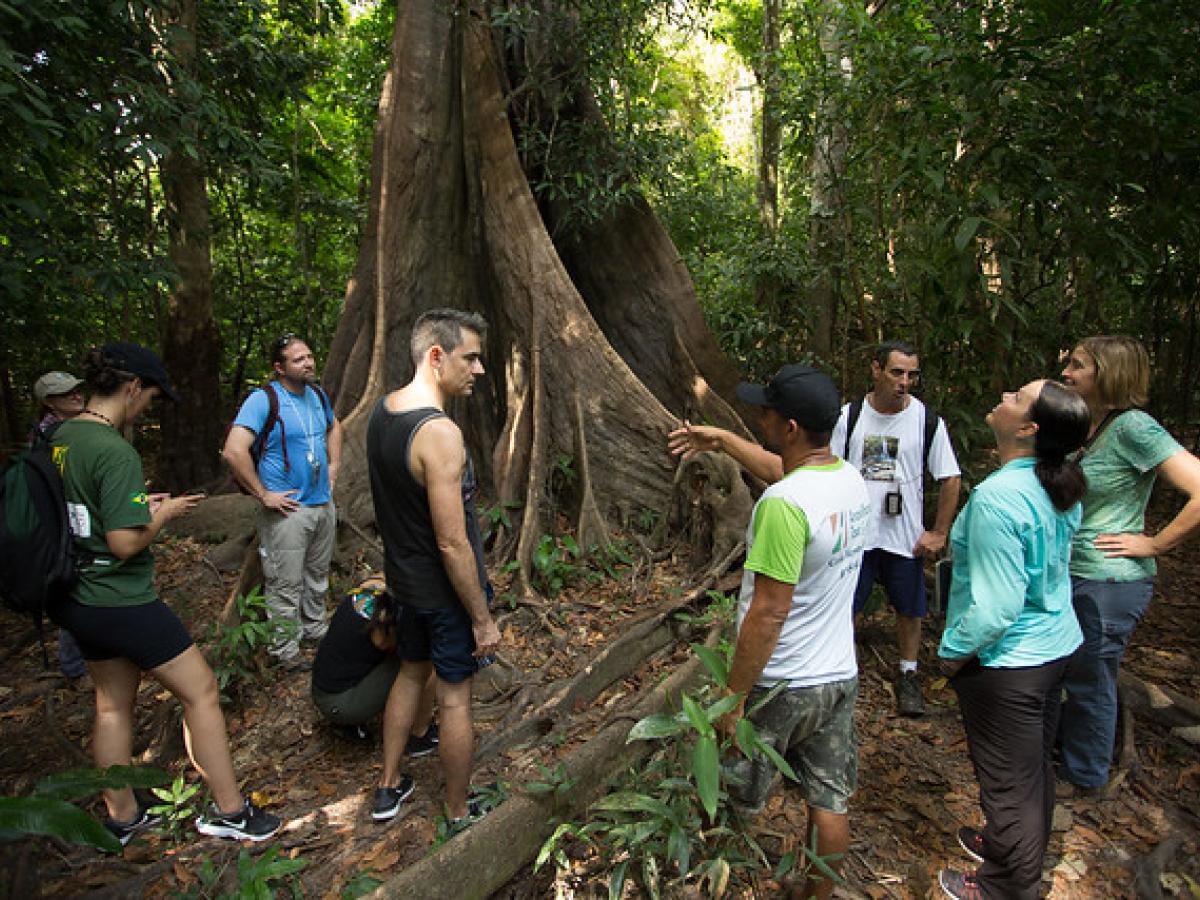Brazil is home to 30 percent of the world’s tropical rainforests, including 60 percent of the Amazon, the largest and most biodiverse tropical rainforest in the world. A shared priority for both the Government of Brazil (GOB) and the U.S. Government (USG) is to strengthen biodiversity conservation in the Brazilian Amazon and its protected areas system, including traditional (indigenous and quilombola) lands.
Under USAID/Brazil’s current biodiversity conservation program, which forms a significant part of the USG-GOB strategic partnership, USAID works in close partnership with the GOB through a long-term Development Objective Grant Agreement (DOAG), signed in August 2014. This strategic program provides targeted technical expertise and cooperation in support of Brazil’s biodiversity and forest conservation and sustainable development goals for the Amazon. Working through and with private sector leaders and Brazilian civil society organizations, USAID and GOB jointly promote new and more sustainable models for socioeconomic development of the region that will ultimately conserve forests and biodiversity while promoting community well-being over the long-term. The consortium of partners under the DOAG, Partnership for the Conservation of Amazon Biodiversity (PCAB) works together to meet Brazil’s conservation and development goals, according to the following Theory of Change: “ If USAID strengthens protected area management and sustainable livelihoods with an emphasis on advancing new tools, technologies and partnerships, then biodiversity in situ will be conserved and community well-being will improve. And if USAID facilitates and shapes demand-side solutions through stimulating private-sector investment and leadership, then systemic, scaled economic development pathways for Brazil’s Amazon will be compatible with and supportive of biodiversity conservation”.
The purpose of this project is to ensure the integrity and conservation of the Brazilian Amazon ecosystem over the next 20 years, with an associated high-level development objective to improve the well-being and socioeconomic status of rural communities based on sustainable economic activities in the Amazon.
The project has four sub-purposes associated with four Intermediate Results (IRs):
Sub-Purpose 1: To strengthen Protected Area management, implementation and monitoring, helping PAs to fully fulfill their conservation and development roles. Intermediate Result 1: Protected Areas (PAs) are fully consolidated, meeting their management, implementation, monitoring and conservation and development roles.
Sub-Purpose 2: To strengthen sustainable forest- and biodiversity-based and biodiversity-friendly value chains and sustainable businesses in the Amazon. Intermediate Result 2: Sustainable forest- and biodiversity-based and biodiversity/forest - friendly value chains and businesses are expanded and strengthened.
Sub-Purpose 3: To catalyse private sector engagement and leadership to invest in and foster sustainable-based economic activities and other joint conservation and development priorities in the Amazon. Intermediate Result 3: Private sector engagement and leadership that actively fosters and invests in a sustainable-based economy in the Amazon is strengthened.
Sub-Purpose 4 (Cross-cutting): To foster the use of technology, innovation, and science-based decision-making in land and PA management, public use, and sustainable economic activities in the Amazon. Cross-Cutting Result: The use of technology, innovation, and science-based decision-making in land and PA management, public use, and sustainable economic activities is increased.

USAID/Brazil supports the sustainable public use of protected areas, such as the Anavilhanas National Park through our partnership with the U.S Forest Service.
Photo: Bruno Kelly – USAID/Brazil
